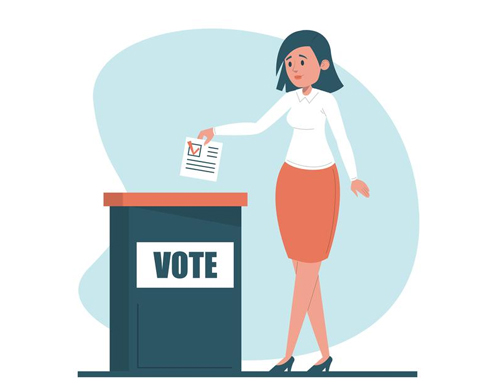
EQUALITY IN POLITICAL AND PUBLIC LIFE AT THE NATIONAL LEVEL
In HKSAR, women enjoy equal rights as men to vote and to stand for elections to DCs and the LegCo, including Functional Constituencies (FCs), as explained in paragraph 159 of the previous report. This right is safeguarded by the Basic Law. Under the relevant legislation, a person’s gender is not a criterion, either direct or indirect, to qualify a person as an elector or a candidate in elections, including FCs elections.
The Government does not agree that there is any relationship between the electoral system of FCs and the participation of women in political life, a concern expressed in the previous Concluding Observations made by the Committee at paragraphs 58 - 59. Our views have been set out in paragraph 162 of the previous report. Indeed, a total of 124 181 female electors have registered in the 28 traditional FCs under the 2017 Final Register, making up 56% of total registered electors whereas a total of 1.78 million female electors have registered in the DC(second)FC under the 2017 Final Register, making up 50.7% of total registered electors. There is no evidence that the elections for the FCs have put female candidates in a disadvantaged position.
The fifth-term Chief Executive election was held in March 2017. Mrs Carrie Lam, one of the three validly nominated candidates, was the first female validly nominated candidate in the history of Chief Executive elections of the HKSAR. On 26 March 2017, Mrs Lam was elected by the Election Committee and became the fifth-term and the first female Chief Executive of the HKSAR, with her term of office starting from 1 July 2017.
The Executive Council is presided over by the first female Chief Executive in Hong Kong and comprises 32 members among which five are women (15.6%).
Issues relating to women in rural elections are covered under Article 14 “Rural Women”.
In maintaining a system of ASBs, a wide cross-section of the community and relevant organisations can participate in the process of policy-making and public service planning. Currently, there are around 490 ASBs. As at December 2017, the women's participation rate of ASBs with Government-appointed non-official members has increased to 32.4% from 28.1% in 2010.
Since the previous report, female participation in the Civil Service has increased steadily. The percentage of female staff in the Civil Service has risen from 34.6% in 2009 to 37.2% in 2016. Furthermore, the number of female directorate officers in the Civil Service has increased from 396 in 2009 to 470 in 2016. In December 2017, female civil servants made up 37.6% of top positions (directorate officers). In the 5th Term Government of the HKSAR, the Chief Executive, the Secretary for Justice and the Secretary for Food and Health are women. As at 31 March 2018, half of the 18 Permanent Secretaries (the most senior civil servants) were females.
